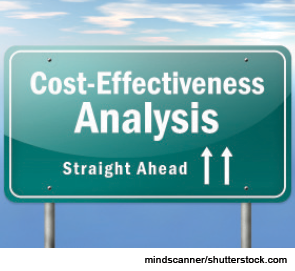
Explore This Issue
November 2014The scientific literature is filled with studies showing that endoscopic sinus surgery (ESS) can be a highly effective therapy for patients with refractory chronic rhinosinusitis (CRS). Quality of life (QoL) scores, changes in endoscopic grading, and a host of other clinical endpoints all improve significantly (Int Forum Allergy Rhinol. 2014;4:823-827).
What is not so well documented, however, is whether those clinical improvements are “worth” the substantially higher up-front costs of surgery when compared with continuing medical therapy. That evidence gap, several rhinology experts argue, has led to persistent problems with payment denials from both government and private payers.
Those obstacles may soon be taken down a few notches, now that the first economic evaluation of ESS using sophisticated statistical modeling has shown that the procedure is in fact the most cost-effective treatment when long-term follow-up is factored into the equation (Laryngoscope. Published online ahead of print September 3, 2014. doi: 10.1002/lary.24916).
The economic model, applied to ESS by lead author Luke Rudmik, MD, MSc, as part of his masters thesis project for the London School of Economics, breaks new ground, according to coauthor Timothy L. Smith, MD, MPH, the director of the Oregon Sinus Center at Oregon Health and Science University in Portland and a member of the ENTtoday editorial advisory board. “This really is the holy grail of evidence for showing that a given therapy not only can improve clinical outcomes but does so in a cost-effective manner relative to other treatment options,” said Dr. Smith.
The economic model included two primary groups for comparison: patients with refractory CRS who underwent ESS followed by post-operative medication therapy, and those treated with medication therapy alone. The primary outcome was the cost per quality-adjusted life year (QALY). Several related outcomes were based in part on those QALY calculations, including incremental cost-effectiveness ratios (ICERs) and other tools for financially assessing the clinical interventions.
Because one of the main goals of the study was to determine whether the higher up-front costs of ESS—approximately $7,500—are justified, the investigators used a 30-year “time horizon” for follow-up. Although the study was a simulation model, the investigators stressed that the variables built into it, such as the probability and cost of peri-operative complications, outcomes after ESS, and the varying “health states” of patients, were based on real-world clinical outcomes from 168 patients who underwent ESS in studies funded by the National Institutes of Health (NIH) (Otolaryngol Head Neck Surg. 2010;142:55-63).